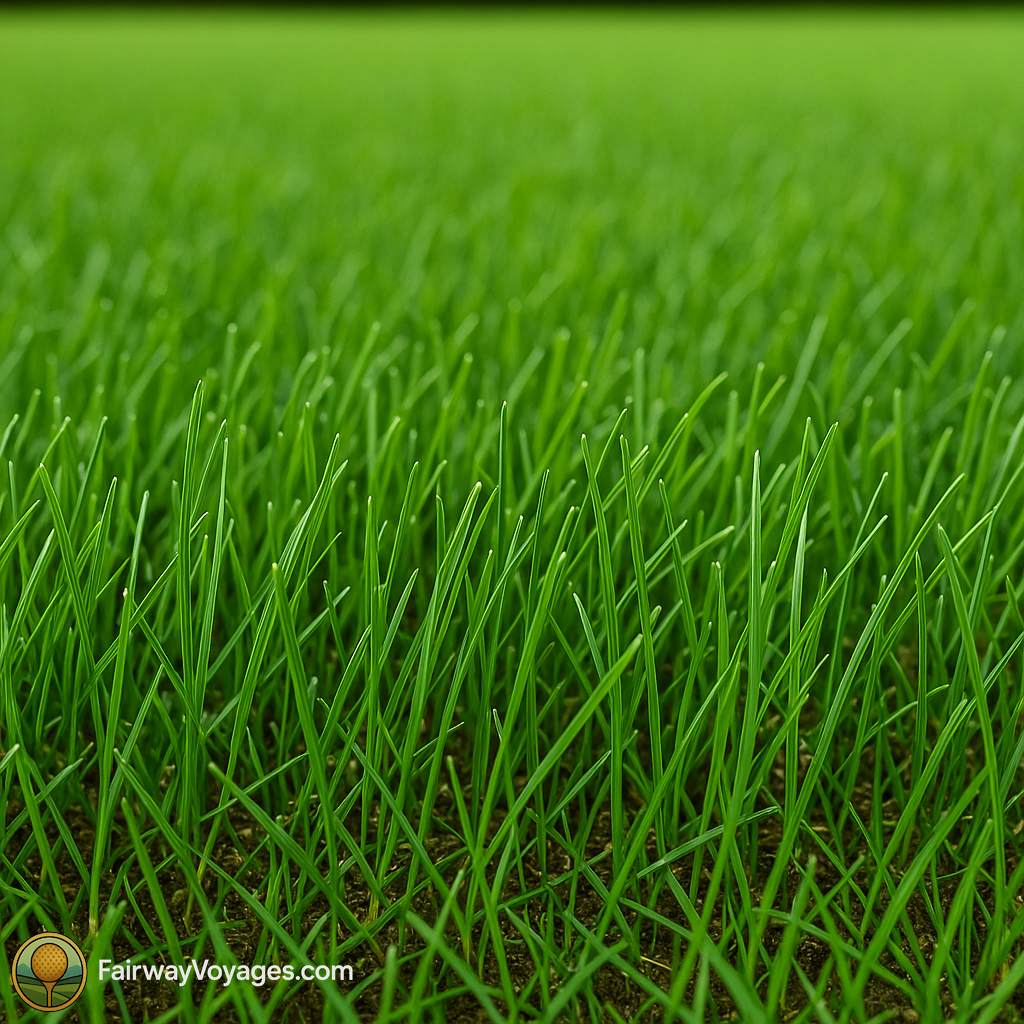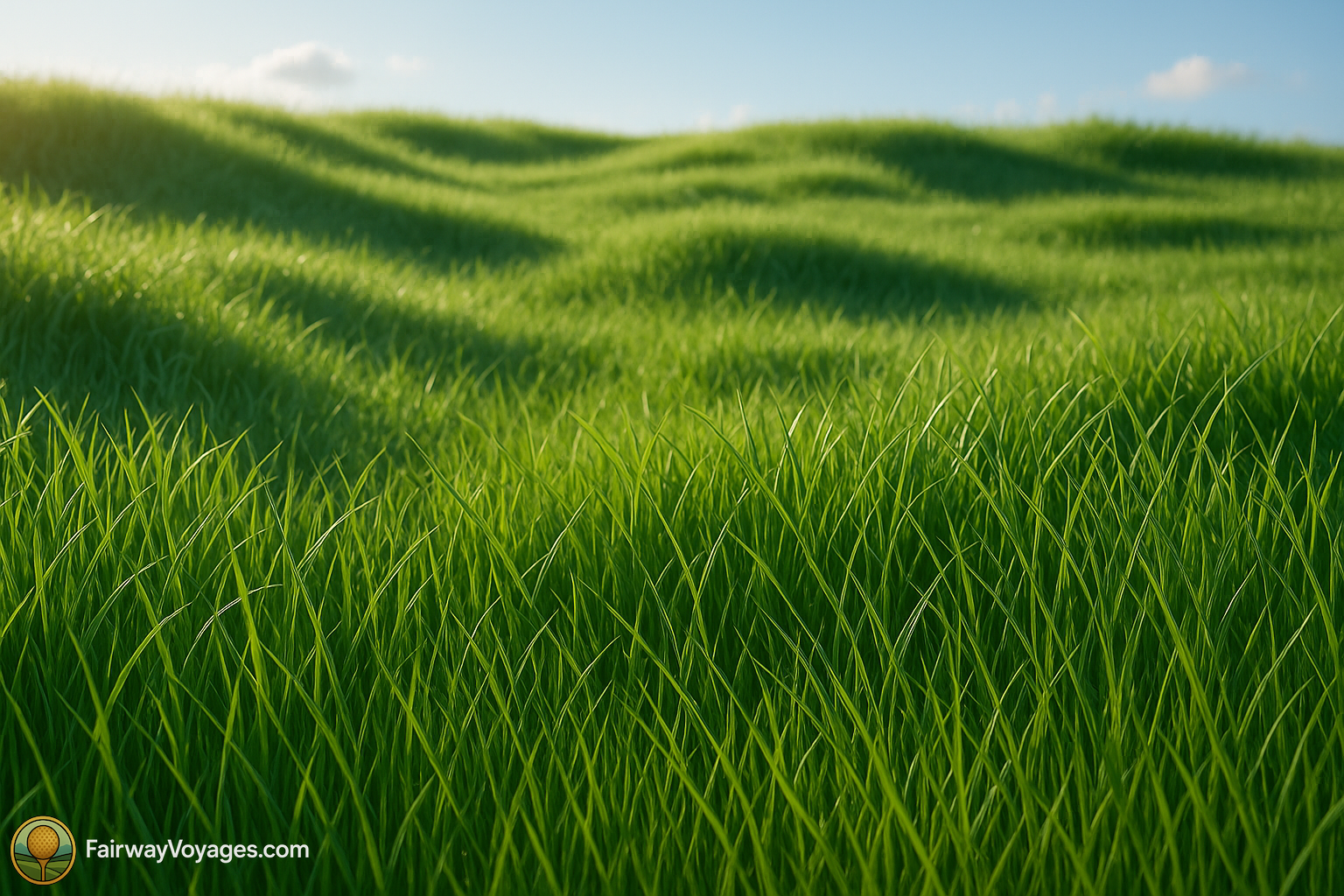The Role of Ryegrass in Modern Golf Course Management
Ryegrass is a widely used cool-season grass, particularly popular in temperate regions for turf applications including sports fields, lawns, and golf courses. It belongs to the genus *Lolium*, with perennial ryegrass (*Lolium perenne*) being the most commonly used species for turfgrass management. Known for its rapid germination, dense growth, and aesthetic appeal, ryegrass offers a strong, resilient surface ideal for high-traffic areas such as golf courses. Its adaptability to mowing and its lush green color make it a reliable choice for turf professionals seeking consistent quality across varying seasonal conditions.
On golf courses, ryegrass is frequently used on tees, fairways, and roughs due to its wear tolerance and quick establishment. It serves an essential function in course maintenance, allowing groundskeepers to repair divots and re-establish turf coverage with minimal disruption to play. Ryegrass performs best in regions with moderate summers and cool winters, thriving in full sun and well-drained soils. While it is not as drought-tolerant as warm-season grasses, its growth characteristics make it an ideal choice for overseeding during cooler months.
Perennial Ryegrass Characteristics
Perennial ryegrass exhibits fine to medium texture, offering a uniform appearance that enhances visual quality and playability. Its dense growth helps outcompete weeds and minimizes the need for herbicidal intervention in well-maintained environments. Unlike annual ryegrass (*Lolium multiflorum*), which is short-lived, perennial ryegrass provides season-long coverage and can persist for multiple years with proper care. It also responds well to mowing as low as 0.5 inches, which is particularly advantageous for golf courses seeking close-cropped playing surfaces.
The grass features a bunch-type growth habit, meaning it spreads by tillering rather than rhizomes or stolons. This allows for precise control over turf spread and limits the risk of encroachment into unwanted areas. However, this trait also means damaged areas must be reseeded, as the grass does not naturally fill in bare spots. Perennial ryegrass typically germinates within 5 to 10 days, significantly faster than many other turfgrass species, making it suitable for quick establishment and recovery.
In addition to its rapid establishment and aesthetic value, perennial ryegrass also exhibits excellent tolerance to foot traffic and moderate resistance to certain turf diseases when properly managed. Its upright growth habit and fine leaf blades contribute to a smooth, even playing surface, crucial for ball roll consistency on fairways and tees. Furthermore, its visual vibrancy enhances the professional appearance of golf courses, making it a preferred choice for high-profile events and televised tournaments where visual impact matters as much as performance.

Seasonal Use and Overseeding Practices
In warm-season climates, ryegrass is often used for overseeding during fall to maintain green turf through winter, particularly on courses that use bermudagrass as the base species. This practice, commonly applied in the southern United States, enables year-round green play surfaces and contributes to the visual appeal of the course during the dormant season. Overseeding is typically performed when soil temperatures drop below 70°F, allowing ryegrass to establish without competition from warm-season turf.
The transition back to warm-season grass in spring can be challenging, as ryegrass may linger longer into the season than desired, competing with bermudagrass as it begins to re-emerge. To aid in transition, turf managers may reduce irrigation and nitrogen inputs, encouraging the decline of ryegrass and promoting the resurgence of base turf. The management of this seasonal interplay is critical to ensuring the long-term health of both grass types and maintaining optimal playing conditions. Strategic mowing, fertilization, and irrigation schedules play a vital role in this transition phase.
Environmental and Maintenance Considerations

Ryegrass requires regular irrigation, particularly in areas with low rainfall or high temperatures, to maintain its lush appearance and functional integrity. Its relatively shallow root system, compared to some warm-season grasses, means it is more sensitive to drought stress. Efficient irrigation systems and proper soil preparation are essential to minimize water usage while maintaining turf quality. Modern courses often use weather-based irrigation controls to reduce unnecessary watering and improve sustainability.
Fertilization is another key aspect of ryegrass maintenance. It responds well to nitrogen-rich fertilizers, which promote vigorous growth and a rich green color. However, excessive nitrogen use can increase thatch buildup and susceptibility to disease. Common diseases affecting ryegrass include gray leaf spot and crown rust, both of which can be mitigated through appropriate fungicide use and cultural practices. Integrated pest management strategies and monitoring are essential to prevent disease outbreaks and reduce chemical inputs.
Advantages and Limitations for Golf Course Applications
The primary advantages of ryegrass for golf courses are its rapid germination, aesthetic qualities, and high tolerance for traffic. These features make it especially useful for tee boxes and fairways that experience frequent use and require fast recovery. In addition, its ability to grow well under cool conditions enables courses in temperate zones to maintain excellent turf quality during fall and spring. The dense, uniform canopy also contributes to consistent ball roll and improved playability.
Despite its benefits, ryegrass has some limitations. It is less tolerant of extreme heat and drought compared to warm-season grasses like zoysiagrass or bermudagrass. Its bunch-type growth means reseeding is necessary for damage repair, which can add to maintenance costs and labor requirements. Additionally, its shallow roots make it more dependent on frequent irrigation and nutrient management. Nevertheless, for many golf courses in the right climate zones, the benefits outweigh the drawbacks.

Ryegrass in Turfgrass Research and Development
Ongoing research into ryegrass cultivars continues to improve disease resistance, drought tolerance, and overall turf performance. Breeding programs focus on enhancing the resilience of ryegrass to environmental stressors and developing cultivars with finer leaf texture and darker color. These innovations help turf managers meet the high standards of modern golf course aesthetics and performance expectations. Collaborations between universities, seed companies, and turf organizations ensure a steady advancement in ryegrass quality.
Newer cultivars are also being developed to exhibit greater heat tolerance, expanding the geographical range in which ryegrass can be used effectively. This is particularly important as climate change presents new challenges for turf management. As genetic improvements continue, ryegrass may become an increasingly viable option even in transition zones, where traditional usage has been limited. The future of ryegrass in golf course applications looks promising, provided that advances keep pace with environmental demands.
